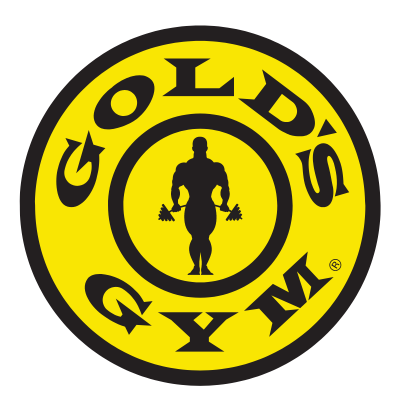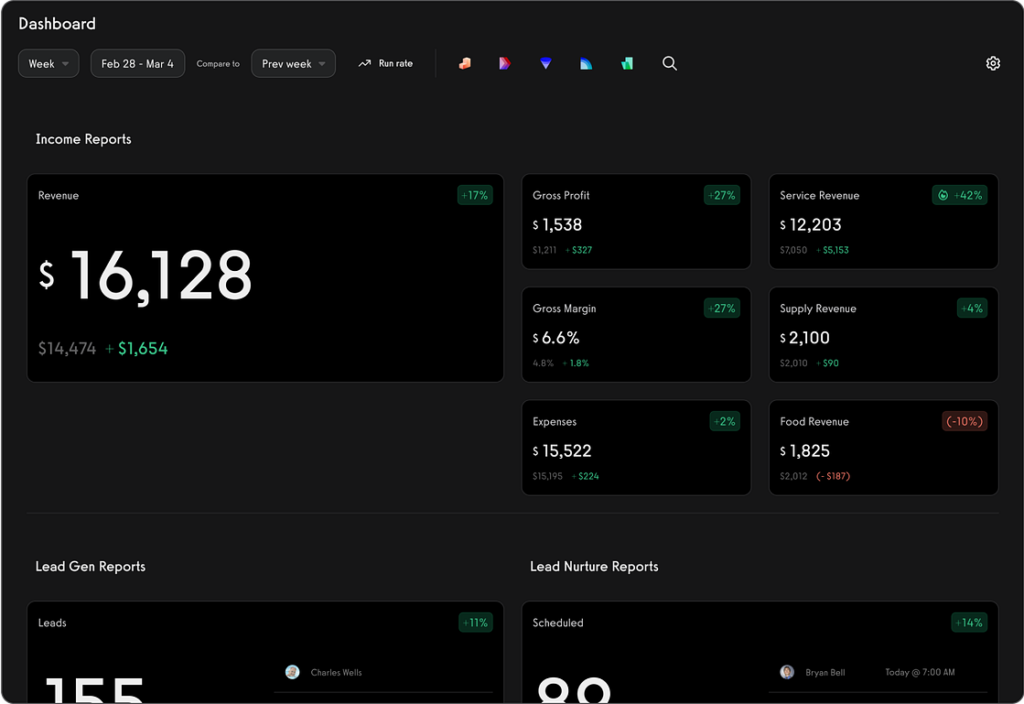Platform
Solutions
Industries
Compare
Resources
Posted by on July 5, 2023 — Updated on January 13, 2025
Read our guide to gym analytics and fitness analytics so that you can put analytics for fitness businesses to use in growing your gym.

In today’s fast-paced and competitive fitness industry, understanding and leveraging gym analytics is crucial for the success of fitness businesses. Gym analytics provide valuable insights into various aspects of a gym’s operations, allowing owners and managers to make data-driven decisions and optimize performance. Understand what data gyms collect, learn gym business intelligence best practices, and learn how data analytics in the fitness industry can take fitness center customer data insights from raw gym data to gym growth.
| Metric | Specific Data to Track | Example Use Case |
|---|---|---|
| Membership Growth and Retention | – New memberships per month- Membership cancellations- Retention rate | Identify that retention dropped by 10% after discontinuing a popular group class and reintroduce it. |
| Attendance and Usage Trends | – Peak hours- Class attendance rates- Equipment usage statistics | Adjust gym hours to align with peak usage times and schedule more popular classes during those periods. |
| Revenue and Profitability | – Monthly recurring revenue (MRR)- Average revenue per member (ARPM)- Profit margins | Increase ARPM by offering premium personal training packages with exclusive perks. |
| Lead Generation and Conversion | – Lead-to-member conversion rate- Marketing campaign ROI- Prospect source insights | Identify that social media ads generate the highest ROI and allocate more budget to digital marketing. |
| Member Engagement and Satisfaction | – Participation in challenges- Member feedback surveys- Frequency of visits per member | Launch a member rewards program to boost engagement and see participation increase by 20%. |
| Operational Efficiency | – Class capacity utilization- Staff productivity metrics- Equipment downtime | Reduce downtime on cardio machines by scheduling proactive maintenance every two weeks. |
Tracking and optimizing these metrics with Exercise.com ensures you have the insights and tools needed to grow your gym effectively and sustainably. Schedule a demo today to see how Exercise.com can help you track and analyze your most important gym metrics!
For free fitness templates with gym KPI dashboards, gym metrics scorecards, gym checklists, and other important gym templates, get your free fitness template now.
In this comprehensive fitness analytics guide, we will explore why gym analytics matter, the basics of gym analytics, the benefits of using analytics in the fitness industry, key metrics to track, setting up an effective gym analytics system, choosing the right tools, and analyzing data for member attendance, engagement, retention, equipment usage, revenue, profitability, marketing strategies, personalized member experiences, identifying trends and opportunities, measuring the effectiveness of group classes and personal training sessions, understanding customer satisfaction, predictive analysis, and best practices for interpreting and acting upon gym analytics insights.
And, of course, how you can use analytics software for gyms that is built right into the Exercise.com platform. See how tools like Exercise.com’s best gym management software with the best gym multi-location software and the best gym CRM software have gym data analytics built right in to drive efficiency and success.
And if you are ready to take your gym business to the next level then this is just another reason Exercise.com’s best gym management software and best personal training management software helps grow your business!


Tracking the right gym metrics is essential for optimizing operations, improving member satisfaction, and driving business growth. With the rise of data analytics in the fitness industry, gym owners can leverage insights to make data-driven decisions that boost performance and profitability. Platforms like Exercise.com excel in providing tools for gym data analysis and fitness business intelligence, making it easier to track and manage the metrics that matter most.
Here are the most important gym metrics to track, alongside why leveraging fitness data analytics and gym analytics software is crucial for success.
Tracking gym member data insights allows you to monitor how many new members are joining, how many are leaving, and overall retention rates. These fitness center metrics provide a clear picture of your gym’s health.
With Exercise.com, you can analyze fitness data to identify patterns in membership growth, helping you implement strategies to retain more members and grow your community.
Understanding gym usage analytics helps optimize operations, from scheduling group fitness classes to managing equipment maintenance. Tracking attendance ensures your resources align with member demand.
Exercise.com provides advanced performance analytics for gyms, allowing you to track real-time attendance and make informed adjustments to improve efficiency.
Financial performance metrics are key to understanding your gym’s success. Gym business intelligence tools can help you break down revenue streams and identify opportunities to improve profitability.
With Exercise.com, you can integrate financial tracking with gym database insights, giving you a comprehensive view of your revenue streams.
Tracking leads and conversion rates ensures you’re making the most of your marketing efforts. Fitness center lead data insights help you assess how effectively you’re turning prospects into paying members.
Exercise.com’s BI for fitness business management tools allow you to track and optimize lead generation strategies, ensuring your marketing dollars are well spent.
Engaged members are more likely to stay loyal. Tracking gym insight on engagement ensures your programs resonate with your audience.
With Exercise.com’s fitness data analysis tools, you can keep your members engaged and satisfied, building a loyal community.
Operational metrics ensure your gym is running smoothly. Gym data analysis can reveal inefficiencies and help you streamline processes.
Exercise.com’s platform provides data fitness analysis tools to streamline operations and maximize efficiency.



Gym analytics matter because they provide fitness businesses with the necessary information to make informed decisions. By analyzing data, gym owners and managers can gain insights into member behavior, preferences, and patterns, allowing them to tailor their offerings to specific segments, improve services, and enhance member experiences. Additionally, gym analytics enable businesses to assess the performance of marketing campaigns, track revenue and profitability, identify opportunities for growth, and stay ahead of the competition. In today’s data-driven world, utilizing analytics is not just a luxury; it’s a necessity for survival and success in the fitness industry.
At its core, gym analytics involves collecting, organizing, and analyzing data related to various aspects of a gym’s operations. This can include member attendance, engagement, retention rates, equipment usage, revenue, profitability, marketing campaigns, and customer satisfaction. The goal is to transform raw data into meaningful insights that can drive decision-making and improvements. With the right tools and techniques, gym owners and managers can gain a deep understanding of their business and make data-driven decisions that lead to tangible results.
The benefits of using analytics in the fitness industry are numerous. Firstly, analytics provide valuable insights into member behavior and preferences, enabling gyms to tailor their offerings to specific segments and provide personalized experiences. This not only improves member satisfaction but also increases member retention rates. Additionally, analytics allow fitness businesses to track revenue and profitability, identify areas of improvement, optimize equipment usage, and make data-driven decisions regarding marketing strategies. By leveraging analytics, gyms can stay ahead of the competition and drive their businesses to new heights.
When it comes to gym analytics, tracking the right metrics is crucial. Some key metrics that fitness businesses should focus on include member attendance, member engagement, member retention rates, equipment usage, revenue, profitability, marketing campaign performance, and customer satisfaction. By regularly monitoring these metrics, gym owners and managers can gain insights into the overall performance of their business and identify areas for improvement.
Setting up an effective gym analytics system requires careful planning and consideration. Firstly, fitness businesses need to determine their objectives and the specific metrics they want to track. Next, they need to invest in the right tools and technologies to collect and analyze the data effectively. This can involve implementing the best fitness business customer relationship management (CRM) system, integrating with attendance tracking systems, utilizing business intelligence software, and employing data visualization tools. Once the system is in place, it’s crucial to establish processes for data collection, analysis, and reporting. Regular data reviews and meetings can help ensure that the analytics system is being utilized to its fullest potential.
Read More: Best CRM Software for Gyms
Choosing the best gym analytics tools depends on the specific needs and resources of the fitness business. There are a variety of tools available in the market, ranging from comprehensive CRM systems to specialized equipment tracking software. It’s important to research and evaluate different options based on factors such as ease of use, compatibility with existing systems, cost, and scalability. Additionally, seeking recommendations from industry peers and consulting with analytics experts can help guide the decision-making process. By selecting the right tools, fitness businesses can maximize the value of their data and gain actionable insights.
Analyzing member attendance and engagement data is vital for understanding member behavior and optimizing gym operations. By tracking attendance patterns, fitness businesses can identify peak hours and allocate resources accordingly. Additionally, analyzing member engagement data allows gyms to assess the popularity of different classes, services, or equipment. Use the best gym member management software to make it easy to analyze the data. By understanding member preferences, gyms can make informed decisions about their offerings and enhance the overall member experience. Regularly reviewing and analyzing attendance and engagement data can lead to improved operational efficiency and increased member satisfaction.
Member retention rates are a key metric that fitness businesses should track closely. By understanding the factors that contribute to member retention and analyzing the data, gyms can implement strategies to improve member loyalty and reduce churn. Using gym analytics, fitness businesses can identify patterns and trends that indicate a decline in member retention and take proactive measures to address the underlying causes. By utilizing data-driven interventions, such as personalized communications, targeted offers, and enhanced member experiences, gyms can significantly improve member retention rates and create a loyal customer base.
Read More: How to Improve Gym Member Retention
Optimizing equipment usage is essential for gym profitability and member satisfaction. By monitoring equipment usage data, fitness businesses can identify underutilized or overutilized equipment, enabling them to make informed decisions regarding equipment purchases, replacements, or relocation. Additionally, tracking equipment maintenance and repair data can help gyms minimize downtime and ensure that equipment is always in good working condition. By leveraging analytics to optimize equipment usage, fitness businesses can enhance the member experience, reduce operational costs, and generate higher revenue.
Revenue and profitability are critical metrics for any fitness business. By analyzing revenue data, gyms can gain insights into the performance of various revenue streams, such as membership fees, personal training sessions, group classes, and retail sales. Additionally, analytics can help identify areas where costs can be reduced or revenue can be increased. By tracking profitability metrics, such as gross profit margin and operating profit margin, fitness businesses can assess their financial health and make informed decisions to improve profitability. Regular analysis of revenue and profitability data enables gyms to uncover hidden opportunities for growth and optimize their financial performance.
Read More:
Data-driven marketing strategies can significantly impact the success of fitness businesses. By analyzing marketing campaign performance data, gyms can identify which channels or tactics are generating the highest return on investment. This helps optimize marketing spend and ensures that resources are focused on strategies that yield the best results. Additionally, analytics can provide insights into gym target market selection and audience demographics, preferences, and behaviors, enabling gyms to tailor their messaging and promotions for maximum impact. Utilizing data to inform marketing strategies empowers fitness businesses to reach their target audience effectively and drive customer acquisition and retention.
Read More: How do you target a gym audience?

Personalized member experiences have become increasingly important in the fitness industry. By leveraging gym analytics, fitness businesses can gain a deep understanding of each member’s preferences, goals, and behaviors. This information allows gyms to create personalized exercise programs, recommend relevant classes or services, and provide tailored communications. By delivering personalized experiences, fitness businesses can foster a stronger connection with their members, increase member satisfaction, and improve long-term loyalty. Gym analytics play a crucial role in enabling fitness businesses to deliver highly personalized and engaging experiences. With the Exercise.com platform, you can set up fitness business marketing automations that send messages to your gym members based on key triggers.
Data analysis in gyms can uncover trends and opportunities that might otherwise go unnoticed. By analyzing historical data, fitness businesses can identify patterns or shifts in member behavior, preferences, or market trends. This allows gyms to adapt their offerings and strategies accordingly, staying ahead of the curve. Additionally, data analysis can help identify untapped market segments, emerging trends, or new revenue streams. By being proactive in identifying trends and opportunities, fitness businesses can position themselves as industry leaders and capitalize on new and exciting possibilities.
Group classes and personal training sessions are key services offered by fitness businesses. By measuring their effectiveness through gym analytics, fitness businesses can assess factors like attendance, member satisfaction, and revenue generation. For group classes, tracking metrics such as class popularity, average attendance, member feedback, and revenue per class can help determine which classes are most successful and make data-driven decisions regarding the scheduling, duration, or instructors of classes. Similarly, analyzing data related to personal training sessions, such as client progress, session frequency, and session revenue, can help optimize this service and ensure that both clients and trainers are getting the most out of the experience.
Customer satisfaction is a vital aspect of any successful fitness business. By leveraging gym analytics to gather and analyze feedback from members through surveys or member satisfaction ratings, fitness businesses can gain valuable insights into their customers’ experiences. This allows businesses to identify areas where improvements can be made and make data-driven decisions regarding service enhancements. By actively listening to member feedback and utilizing analytics tools to measure customer satisfaction, fitness businesses can continuously improve the member experience and nurture a loyal customer base.
Predictive analysis, a branch of gym analytics, enables fitness businesses to forecast future trends and make proactive decisions. By analyzing historical data and utilizing statistical modeling techniques and gym membership statistics, businesses can predict future member behavior, market trends, or revenue growth. This information empowers gyms to adapt their strategies, stay ahead of the competition, and capitalize on emerging opportunities. Predictive analysis is a powerful tool for fitness businesses that want to stay ahead of the curve and make informed decisions for long-term success.
Interpreting and acting upon gym analytics insights require a systematic approach. To begin with, fitness businesses should establish clear goals and objectives for their analytics initiatives. This helps guide the interpretation process and ensures that insights are aligned with the desired outcomes. Next, it’s essential to involve relevant stakeholders, such as managers, trainers, and marketing professionals, in the data analysis and interpretation process. This collective input can provide a well-rounded understanding of the insights and enable effective decision-making. Finally, it’s crucial to act upon the insights and implement changes based on the analysis. Regular evaluation and adjustment of strategies based on new data ensure that gym analytics insights translate into tangible improvements and results.
Real-life case studies provide valuable examples of how gyms have successfully utilized data-driven decision making to achieve remarkable results. These case studies serve as models for fitness businesses looking to leverage analytics for success. By exploring the experiences of other gyms, fitness businesses can gain insights into best practices, implementation strategies, and potential challenges that come with data-driven decision making. Case studies highlight the transformative power of gym analytics and demonstrate how fitness businesses can thrive by embracing a data-driven approach.
Several gym owners and fitness professionals have leveraged Exercise.com’s robust analytics platform to not only manage their operations more efficiently but also foster growth. While the following case studies are based on composite examples and not real names, they reflect the real ways gym owners have been using Exercise.com for gym member management and growth.
ProFit Gym had been noticing a decline in member retention rates. After adopting Exercise.com, they started utilizing its analytics features to monitor member activity data. By studying patterns such as gym check-in frequency (with the best gym check-in software that was integrated with the analytics reporting software), class attendance, and workout routine usage, they identified at-risk members who were less active. The gym then developed personalized engagement strategies, such as sending reminders, offering personal training sessions, or proposing new workout routines, which led to a significant increase in their member retention rates.
Read More: Best Gym Check-In Software
Flex Fitness wanted to expand its operations, but they were unsure of the best strategy. Using Exercise.com’s analytics platform, they analyzed their most popular classes, peak gym usage times, and member demographics. The data indicated a strong demand for early morning yoga among female members in their 30s. As a result, they launched a new yoga-focused branch that was an instant success, demonstrating how predictive analytics can guide strategic planning.
Pulse Studios had multiple income streams including membership fees, personal training, merchandise, and drop-in class payments. However, they found it challenging to track all these finances manually. By utilizing Exercise.com’s financial reporting tools, they were able to monitor income streams effectively, identify their most profitable services, and adjust their offerings accordingly to maximize revenue.
MaxStrength Gym had a large team of personal trainers, but they had no system in place to measure their performance. Using Exercise.com’s analytics, they began tracking metrics such as client retention, session completion, and client progress. This not only allowed them to identify high-performing trainers and share their practices but also helped address any issues proactively to ensure high-quality service for all clients.
TotalBody Health Club wanted to improve their services and customer satisfaction, so they turned to Exercise.com’s survey and feedback analytics. By analyzing member feedback, they identified areas of improvement such as class variety and equipment maintenance. Implementing changes based on member feedback led to a marked increase in customer satisfaction and positive online reviews, showcasing how data can drive service improvement.
Energize Fitness Center ran several marketing campaigns but struggled to assess their effectiveness. Using Exercise.com’s marketing analytics, they tracked metrics like lead conversion rates, customer acquisition costs, and campaign-related spikes in gym visits. This data-driven approach helped them refine their marketing strategy, focus on high-performing campaigns, and ultimately grow their membership.
Exercise.com’s robust analytics platform provides fitness businesses with crucial insights that can drive decision-making, optimize operations, and foster growth. As seen in these case studies, the power of data, when harnessed effectively, can be transformative.
As the fitness industry continues to evolve and become more competitive, gym analytics have emerged as an indispensable tool for success. By understanding why gym analytics matter, grasping the basics of gym analytics, and leveraging the benefits of using analytics in the fitness industry, fitness businesses can gain a competitive edge.
Tracking key metrics, setting up an effective gym analytics system, and choosing the right tools are essential steps in harnessing the power of data. Analyzing member attendance and engagement data, tracking member retention rates, optimizing equipment usage, and examining revenue and profitability with gym analytics provide valuable insights for informed decision-making.
Gym analytics also empower fitness businesses to improve marketing strategies, deliver personalized member experiences, identify trends and opportunities, and forecast future trends. Best practices for interpreting and acting upon gym analytics insights ensure that the data translates into positive outcomes. Finally, real-life case studies showcase the transformative impact of data-driven decision making in the fitness industry.
Ready for the best gym software?


Gyms collect data such as member demographics, attendance records, fitness goals, payment history, and class bookings. Advanced gyms also gather fitness data insights like workout performance, session preferences, and member feedback to personalize services and improve retention. Tools like gym analytics software and fitness center customer data insights provide actionable information to optimize operations.
To perform a market analysis for a gym, evaluate your fitness industry analysis, local competitors, and customer demographics. Use fitness lead data insights to identify potential clients and assess demand for services like group fitness classes or personal training. Leverage gym metrics and customer trends to position your gym effectively.
Tracking gym progress involves using fitness data analysis tools to monitor metrics like body composition, strength gains, and workout frequency. A gym membership database or gym analytics software can store and analyze this data, ensuring trainers provide tailored programs based on client progress.
The global fitness industry generates over $87 billion annually, with 20% to 30% of gyms offering big gym data capabilities to enhance operations. Approximately 81% of gym-goers use technology like apps or wearables to track progress, emphasizing the importance of integrating fitness and big data solutions.
Read More:
Fitness data can be tracked through wearables, apps, or gym management platforms that collect gym usage analytics and fitness data insights. These tools provide detailed reports on performance, attendance, and preferences to optimize fitness programs and improve client retention.
Yes, gyms often conduct field research by analyzing gym member data insights and customer feedback to improve offerings. Surveys, fitness customer data insights, and usage trends help gyms refine their services and align with market demands.
To perform a SWOT analysis for a gym, identify strengths (e.g., loyal membership, advanced fitness center business intelligence tools), weaknesses (e.g., limited marketing), opportunities (e.g., leveraging group fitness analytics solutions), and threats (e.g., competition or economic downturns).
Analyzing a fitness business involves reviewing financial performance, gym insight tools, membership trends, and marketing effectiveness. Fitness club business intelligence software can help track key performance indicators (KPIs) like revenue per member and class attendance rates.
To scale a gym business, leverage fitness club prospect data insights to expand marketing efforts, invest in advanced gym analytics software, and diversify revenue streams through online training or retail sales. Implementing robust gym business intelligence tools helps streamline multi-location operations.
Read More: How to Scale a Gym to Multiple Locations
The market leaders in the gym industry include brands like Planet Fitness, Equinox, and Anytime Fitness, known for their strong brand presence and advanced use of fitness business intelligence to drive growth.
Around 65% of gyms are profitable, with higher success rates for gyms that utilize gym lead data insights, optimize operations with fitness club member data insights, and implement strong retention strategies.
A gym marketing plan should target key demographics using gym prospect data insights and emphasize unique offerings like group classes or personal training. Utilize fitness center business intelligence tools to track campaign performance and refine strategies.
Read More: How to Create a Gym Marketing Plan
The gym market is a growing sector within the fitness industry analysis, driven by demand for personalized training, group fitness, and wellness services. Gyms that integrate big gym data market solutions are better positioned to meet evolving customer expectations.
Conduct a gym analysis by evaluating financial performance, membership trends, and operational efficiency. Use gym membership database tools and fitness club business intelligence software to analyze metrics like revenue, retention rates, and member engagement.
Valuing a gym involves assessing financial statements, member growth trends, and equipment inventory. Gym metrics like annual revenue, profit margins, and utilization rates help determine its market value.
Read More: Gym Valuation Guide
Fitness data analysis is crucial for understanding member behavior, improving retention, and optimizing operations. By using gym analytics software and tracking health club customer data insights, fitness businesses can make data-driven decisions to enhance profitability and member satisfaction.
The best fitness data analytics software is Exercise.com, which provides an all-in-one platform for tracking fitness data insights, analyzing performance metrics, and streamlining operations. It helps gyms gain actionable insights from big gym data to improve member experiences and business outcomes.
A fitness data analyst for gyms uses gym usage analytics, fitness club lead data insights, and member behavior trends to optimize marketing strategies, improve retention, and enhance operational efficiency. Their work supports data-driven decision-making for fitness businesses.
Advanced performance analytics for gyms include tools for tracking attendance, revenue per member, and training session effectiveness. These insights, derived from fitness club business intelligence, help gyms maximize performance and profitability.
The best BI (business intelligence) for fitness management is Exercise.com, offering customizable tools to track fitness center business intelligence metrics, member data, and financial performance in one comprehensive platform.
Key fitness center lead data insights include lead conversion rates, referral sources, and prospect engagement. Fitness center member data insights focus on attendance patterns, member retention rates, and class participation, enabling gyms to refine marketing and operational strategies.
The best gym analytics software is Exercise.com, which integrates robust data tracking and reporting tools, allowing gyms to analyze fitness data, manage memberships, and optimize business performance with ease.
Read More: Best Gym Analytics Software
The best software to manage a gym is Exercise.com, offering an all-in-one solution for scheduling, payment processing, member engagement, and advanced analytics. Its customizable platform ensures gyms can streamline operations and deliver exceptional service.


 Tyler Spraul
Tyler Spraul 




